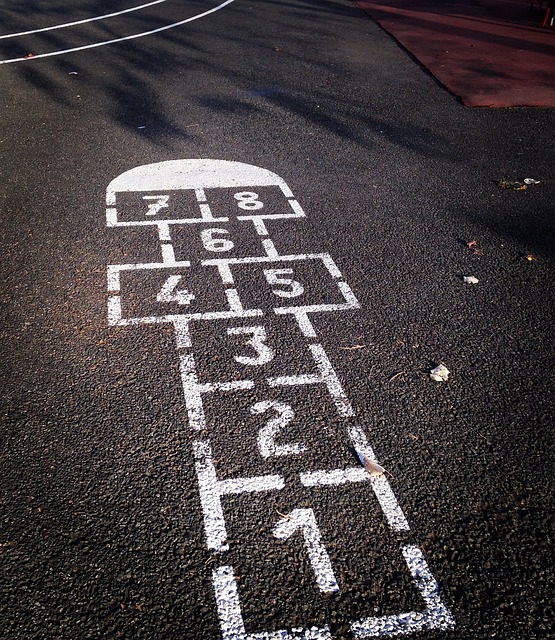Understanding Oregon's child welfare court system is crucial for all involved parties. The state provides a comprehensive guide outlining fair and protective procedures for vulnerable children while respecting parental rights. Court processes involve multiple stages, from case intake to permanency planning, balancing the best interests of the child and parental rights through hearings and informed judicial decisions. By familiarizing themselves with these procedural insights, individuals can navigate and prepare effectively for their roles in Oregon's child welfare court system. This guide emphasizes the importance of legal representation and offers detailed steps from initial hearings to post-court monitoring, ensuring a fair and successful outcome for all parties and the well-being of involved children.
Navigating Oregon’s child welfare court system can be a complex and emotional journey. This comprehensive guide is designed to provide valuable insights into the court procedures for those involved in Oregon’s child welfare system. From understanding the legal framework to post-court monitoring, this article covers essential aspects. Learn about eligibility, key player roles, court hearings, legal rights, and reunification options. Whether you’re a parent, guardian, or social worker, these procedural knowledge is crucial for effectively navigating the Oregon child welfare court.
- Understanding the Oregon Child Welfare Court System
- Eligibility and Referral Processes for Involvement
- Key Players: Roles of Parents, Guardians, and Social Workers
- The Court Hearing: What to Expect Step-by-Step
- Legal Rights and Representation for All Parties Involved
- Post-Court: Monitoring, Case Plan, and Reunification Options
Understanding the Oregon Child Welfare Court System

Understanding the Oregon Child Welfare Court System is a crucial step for anyone involved in these proceedings. The state’s child welfare court guide outlines a process designed to protect and nurture vulnerable children while ensuring their parents or guardians receive fair treatment. Navigating court procedures in Oregon involves several stages, from initial case intake to potential permanency planning.
Court procedural insights reveal that the system is structured to balance the best interests of the child with the rights of parents or guardians. This delicate balance is maintained through hearings, where all parties present their cases, and judges make informed decisions based on evidence and legal arguments. By understanding these court procedures in Oregon, individuals can better prepare for their roles, whether as parents fighting for custody, advocates supporting children, or professionals involved in the process.
Eligibility and Referral Processes for Involvement

In Oregon, the child welfare court system is designed to protect and nurture children who are at risk or involved in abusive situations. Eligibility for involvement in these courts is based on specific criteria related to a child’s well-being. Typically, concerns arise when a child faces potential harm due to neglect, abuse, or other critical circumstances. Professionals such as teachers, medical staff, social workers, and law enforcement officers can refer cases to the court if they observe signs of danger or significant developmental delays. The referral process involves documenting observations, conducting interviews, and presenting evidence that substantiates the need for intervention.
Understanding the court procedures in Oregon requires familiarity with the various stages of the process. Once a case is referred, a petition is filed, outlining the allegations against the parents or guardians. This triggers an initial hearing where the court assesses the situation and determines whether there’s enough cause to proceed. From there, the court may order services for the family, set visitation rights, and schedule regular check-ins to monitor progress. This guide provides insights into these procedures, helping those involved navigate the Oregon child welfare court system effectively.
Key Players: Roles of Parents, Guardians, and Social Workers

In any Oregon child welfare court case, several key players are involved in the legal process, each with distinct roles and responsibilities. Parents or guardians, as the primary caregivers, have a crucial say in their child’s future. They must actively participate in court hearings, cooperate with social workers, and work towards ensuring their child’s safety and well-being. Understanding their rights and duties is essential for navigating Oregon child welfare court procedures effectively.
Social workers play an indispensable role as intermediaries between the family and the court. They conduct investigations, assess family situations, and provide support services to families involved in child welfare cases. Their insights into a family’s dynamics and needs are vital for the court to make informed decisions. By understanding these roles and the underlying court procedural insights, parents, guardians, and social workers can better collaborate throughout the Oregon child welfare court process.
The Court Hearing: What to Expect Step-by-Step

When facing a case in the Oregon child welfare court, it’s crucial to be prepared and understand what to expect during the hearing. Here’s a step-by-step guide to navigate this process with confidence. First, gather all necessary documents related to your case, such as court papers, medical records, or any evidence supporting your position. Arrive early at the court building to account for potential delays; parking and security measures may vary.
Inside the courtroom, take a moment to familiarize yourself with the layout and observe other participants, including judges, attorneys, social workers, and potential witnesses. When called upon, present your case clearly and concisely. Be prepared to answer questions from the judge and opposing counsel. Throughout the hearing, pay close attention to procedural insights, such as deadlines for filing documents or required actions after the court’s ruling. Understanding these court procedures in Oregon is essential to ensuring a fair and efficient resolution of your child welfare case.
Legal Rights and Representation for All Parties Involved

In any Oregon child welfare court proceeding, all parties involved—parents, guardians, and children—have specific legal rights. These rights ensure that everyone has a fair and just opportunity to present their case. Understanding these rights is crucial when navigating the court procedures in Oregon. Parents and guardians have the right to be represented by an attorney, who can guide them through the complex court process, advocate for their interests, and ensure their voices are heard. This representation is particularly important given the high stakes involved in child welfare cases.
A comprehensive Oregon child welfare court guide should emphasize the significance of legal representation. It should also provide insights into the court procedural steps, from initial hearings to trial. Knowing what to expect at each stage helps all parties prepare effectively. Understanding the court process enables parents and guardians to actively participate, make informed decisions, and ultimately advocate for the best interests of their children within the framework of Oregon’s child welfare laws.
Post-Court: Monitoring, Case Plan, and Reunification Options

After a case reaches a resolution in Oregon child welfare court, the work is far from over for all parties involved. The next critical phase focuses on monitoring the situation to ensure the well-being and progress of the involved children. This involves regular check-ins and updates with social workers, who will assess the family’s compliance with the previously established case plan. The case plan, a detailed roadmap designed during the court process, outlines specific steps aimed at addressing the issues that led to the child welfare involvement.
Reunification is a primary goal for many families. If all parties adhere to the case plan and demonstrate significant improvement in meeting the identified needs, reunification with the parents or guardians can be an option. However, this process must be carefully managed by social workers and monitored by the court to ensure the child’s safety and best interests remain paramount. Understanding these post-court procedures is crucial for families navigating Oregon child welfare court, providing them with a sense of direction and hope for a successful future.
